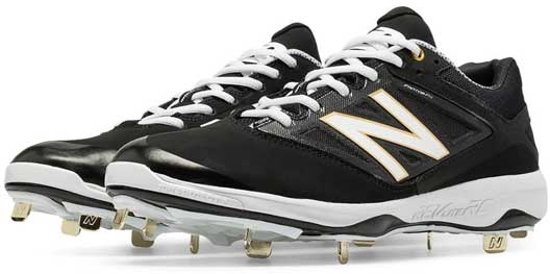I enjoy writing these articles for my readers, you guys. I don't accept payment for writing reviews, my opinion on products is my own, but if you find my recommendations helpful and you end up buying something through one of the links I may be able to receive a commission on that. More information
Baseball is a wonderful sport that, strangely enough, is still very much undervalued in the Netherlands. But it has been gaining traction for a number of years, which is why it is also good to think about the referees of this beautiful ball sport: the Umpire.
First, I want to briefly discuss with you the clothing that is suitable for conducting a baseball game.
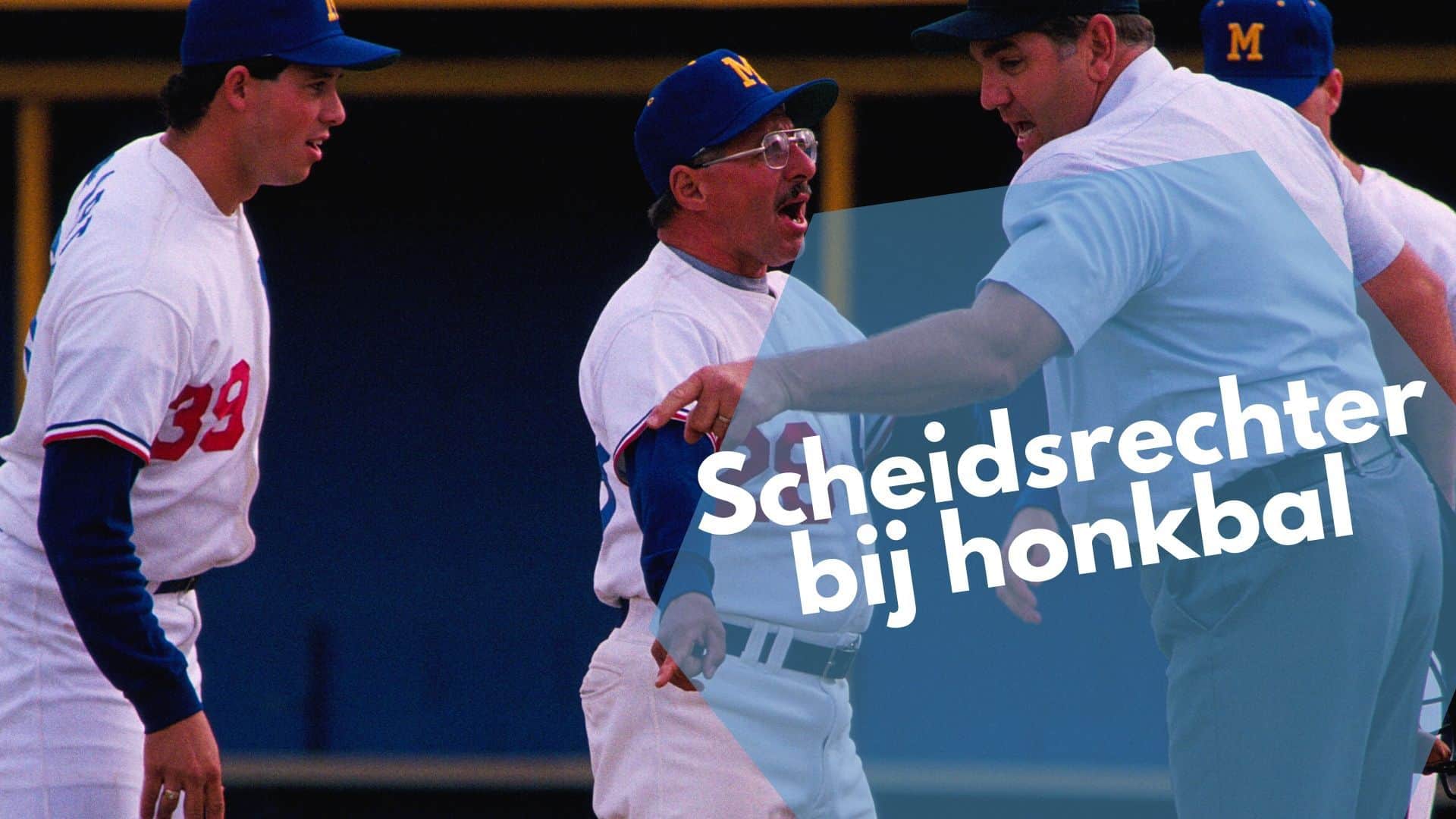
What we discuss in this comprehensive post:
What clothing suits a baseball umpire?
We can divide the clothing into two categories: the right shoes and the right outfit.
Shoes for a ref
Because you play on a field and still move around quite a bit, it is also recommended for a baseball player to wear shoes with studs, specifically made for the sandy ground of the baseball field.
These New Balance 4040V3 Metal Low Cut Baseball Shoes are the absolute best I have found and will last for years. Sturdy, comfortable and provide sufficient grip:
At 130 euros quite an expense and I can imagine that not everyone wants to spend that immediately, for example when you are just starting out. These variants here from around 56 euros are also great to start with.
However, the referee usually wear sports shoes like this one to be agile and yet not be too fixed. They have to lead the game and are not an active part, as is the case with football, for example.
The baseball umpire uniform
Baseball referees have a fairly simple uniform. Usually a dark shirt or polo-style shirt and smart pants.
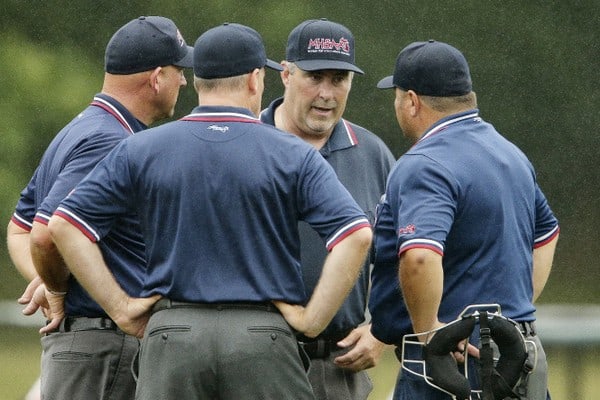
(Photo: MLive.com)
For example, a good dark shirt is definitely a perfect choice:
Combine that with a sturdy neat gray trousers like these here and you already have the perfect outfit to look good as a baseball umpire.
Also read: the best baseball bats
The function baseball umpire
To make the game of baseball as fair as possible, there are usually umpires on the field to call the rules. Sometimes the umpires are referred to as “Blue” or “Ump” for short.
Depending on the competition and level of play, there may be between one and four umpires.
Most games have at least two umpires, so you can be behind the plate and one in the field. In Major League Baseball there are four umpires.
Place Referee
The plate umpire, or plate umpire, is behind home plate and is responsible for calling balls and strikes. This umpire also calls about batter, fair and foul balls at third and first base and plays at home plate.
Base Umpire
Base umpires are usually assigned to a base. In the major leagues, there are three base referees, one for each base.
They call around the base they are responsible for. The first and third base umpires will also make the call regarding a batter's control swing to say if the batter swung far enough to be called a strike.
In many youth leagues there is only one basic referee. This umpire must cross the field to attempt to make the call.
If there is no base umpire, the board umpire should make the best call they can make from their position at that time.
Umpire signals
The umpires make signals so that everyone knows what the call was. Sometimes these signals can be very dramatic and entertaining, especially when you're recording a close-safe or an away game.
Here are some of the common signs referees will see:
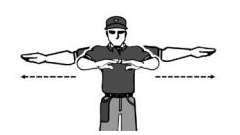
Safe
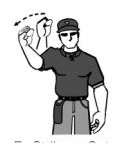
Out of Strike
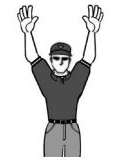
Time Out or Foul Ball
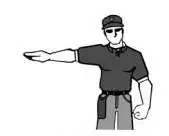
Fair Ball
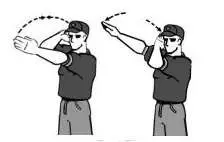
foul tip
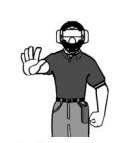
Don't Pitch
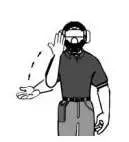
Play ball
Respect the referee
Referees want to do the best job they can, but they will make mistakes. Players and parents must respect umpires at all levels of the game.
Yelling at the referee or loudly calling out contentious will never help your cause and is not good sportsmanship.
The rules of baseball can be quite complex. They can be divided into four sections:
- the playground
- game structure
- throw and hit
- pull out
Baseball playing field
The playing field in baseball is made up of an infield and an outfield. The infield is defined by 4 bases forming a square.
This square is called the baseball diamond. The bases are called home plate (this is where the batter is), first base, second base and third base.
The runners go to each base in order. In the middle of the infield is the pitching mound. The pitcher must have one foot on the pitcher's rubber when throwing a pitch.
In a standard baseball field, the distance between each base is 90 feet. The distance from the pitchers mound to home plate is 60 feet 6 inches.
The lines formed between home plate and first base, as well as home plate and third base, are the foul lines.
These lines extend out to the outfield and, along with the hopscotch on the baseball field, define baseball's outfield.
Baseball game structure
A baseball game is defined by outs and innings. A game usually consists of 9 innings, but can contain fewer innings at many levels of play.
During each inning, each baseball team takes turns. The home team teed off in the bottom of the inning. During a team's at bat, they may continue hitting as long as they do not have three outs.
On getting a third out, the inning is over or it's the opposing team's turn. The winner of the baseball game is the team with the most runs at the end of the last inning.
A point is scored for each player who crosses home plate safely. If the game is tied, another inning is played until there is a winner.
Running and hitting baseball
Each “at bat” in a game begins with a pitch. The pitcher throws the ball over home plate in an attempt to get a strike.
A strike is when the baseball is thrown over the home plate area, above the batter's knees and below the batter's belt.
However, this “strike zone” is at the discretion of the umpire calling the game. A strike also occurs when the batter swings to the baseball and misses completely, regardless of the location of the field.
A strike is also called when a batter fouls the ball. A foul ball only counts as a first or second stroke.
All fouls after the second strike do not count as balls or strikes. A throw that is not a stroke and is not skipped by the batter is called a ball.
If the pitcher throws 4 balls, the batter must advance to first base. This is called a walk. If the pitcher hits 3 shots, the batter is out.
If the batter hits the baseball inside the field of play, he then tries to advance on the bases.
Hatch
Once the batter hits the baseball in play, the batter becomes a base runner. The defending team, or field players, try to defeat the base before he/she can reach the safety of a base.
The first goal is to catch the baseball before it hits the ground. If the fielders do this, the batter is out and all other base runners must return to their original base before being tagged or they are out.
Once the ball hits the ground in play, the field players must grab the baseball and try to tag or "force" base runners.
A force out is when the base runner has nowhere to go but to the next base.
This is always the case with batter and first base. In the case of a force throw, the defenders are not required to tag the runner, but simply have one foot on the base and control the ball before the base runner touches the base.
To tag a runner, the defending player must tag the runner with the baseball or with the glove holding the baseball.
An out can be reached any time there is a base runner. If a base runner tries to steal a base or has a major distraction from the base, the pitcher or catcher may be able to throw them away.
In this case, they should label the runner.

